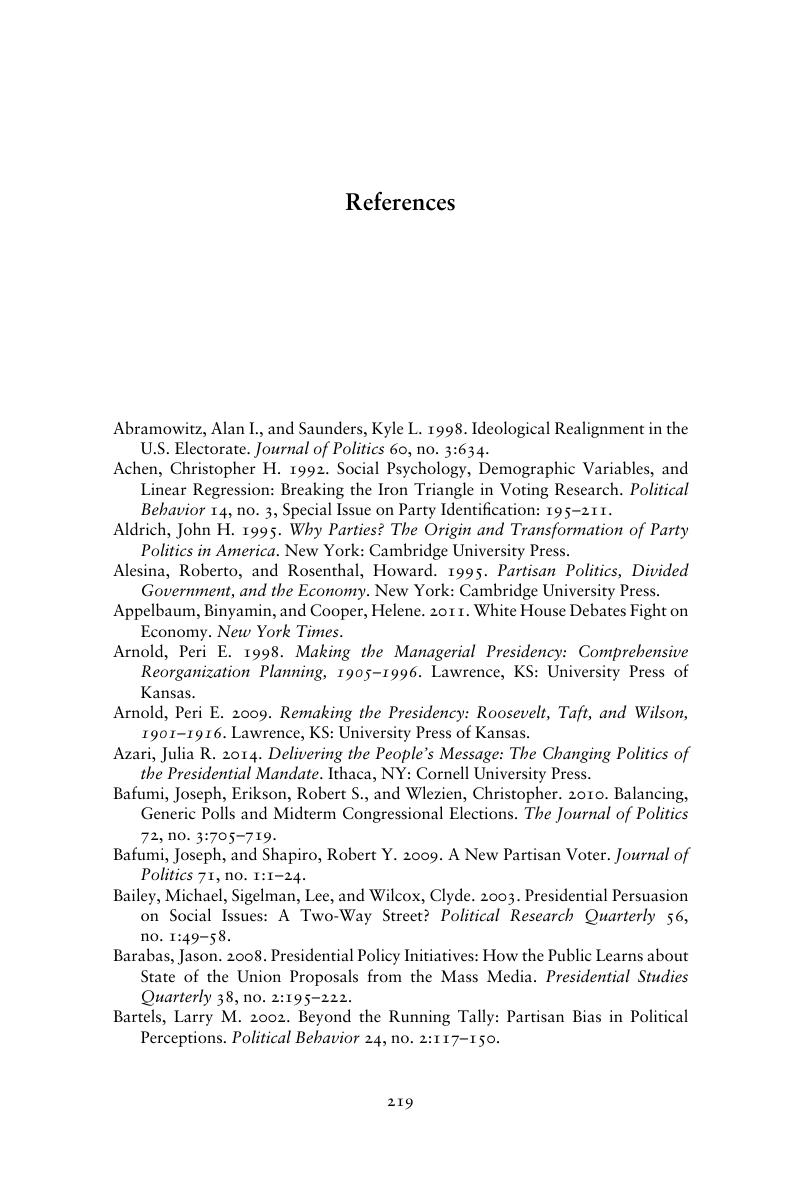Book contents
- The Party Politics of Presidential Rhetoric
- The Party Politics of Presidential Rhetoric
- Copyright page
- Dedication
- Contents
- Acknowledgments
- 1 Presidents, Public Opinion, and the Political Parties
- 2 Assessing Presidential Rhetoric
- 3 The Effect of Presidential Rhetoric on the Attentive Audience
- 4 The Short-Term Effect of Presidential Rhetoric
- 5 Presidential Leadership of Partisan Opinion
- 6 The Public Agenda and the Reputations of the Parties for Handling Policy
- 7 Presidential Rhetoric and the Public Agenda
- 8 Presidential Rhetoric and Party Reputations for Handling Policy
- 9 The Interplay of Macrohandling and Macropartisanship
- 10 The Party Politics of Presidential Rhetoric
- References
- Index
- References
References
Published online by Cambridge University Press: 31 March 2017
- The Party Politics of Presidential Rhetoric
- The Party Politics of Presidential Rhetoric
- Copyright page
- Dedication
- Contents
- Acknowledgments
- 1 Presidents, Public Opinion, and the Political Parties
- 2 Assessing Presidential Rhetoric
- 3 The Effect of Presidential Rhetoric on the Attentive Audience
- 4 The Short-Term Effect of Presidential Rhetoric
- 5 Presidential Leadership of Partisan Opinion
- 6 The Public Agenda and the Reputations of the Parties for Handling Policy
- 7 Presidential Rhetoric and the Public Agenda
- 8 Presidential Rhetoric and Party Reputations for Handling Policy
- 9 The Interplay of Macrohandling and Macropartisanship
- 10 The Party Politics of Presidential Rhetoric
- References
- Index
- References
Summary

- Type
- Chapter
- Information
- The Party Politics of Presidential Rhetoric , pp. 219 - 234Publisher: Cambridge University PressPrint publication year: 2017



